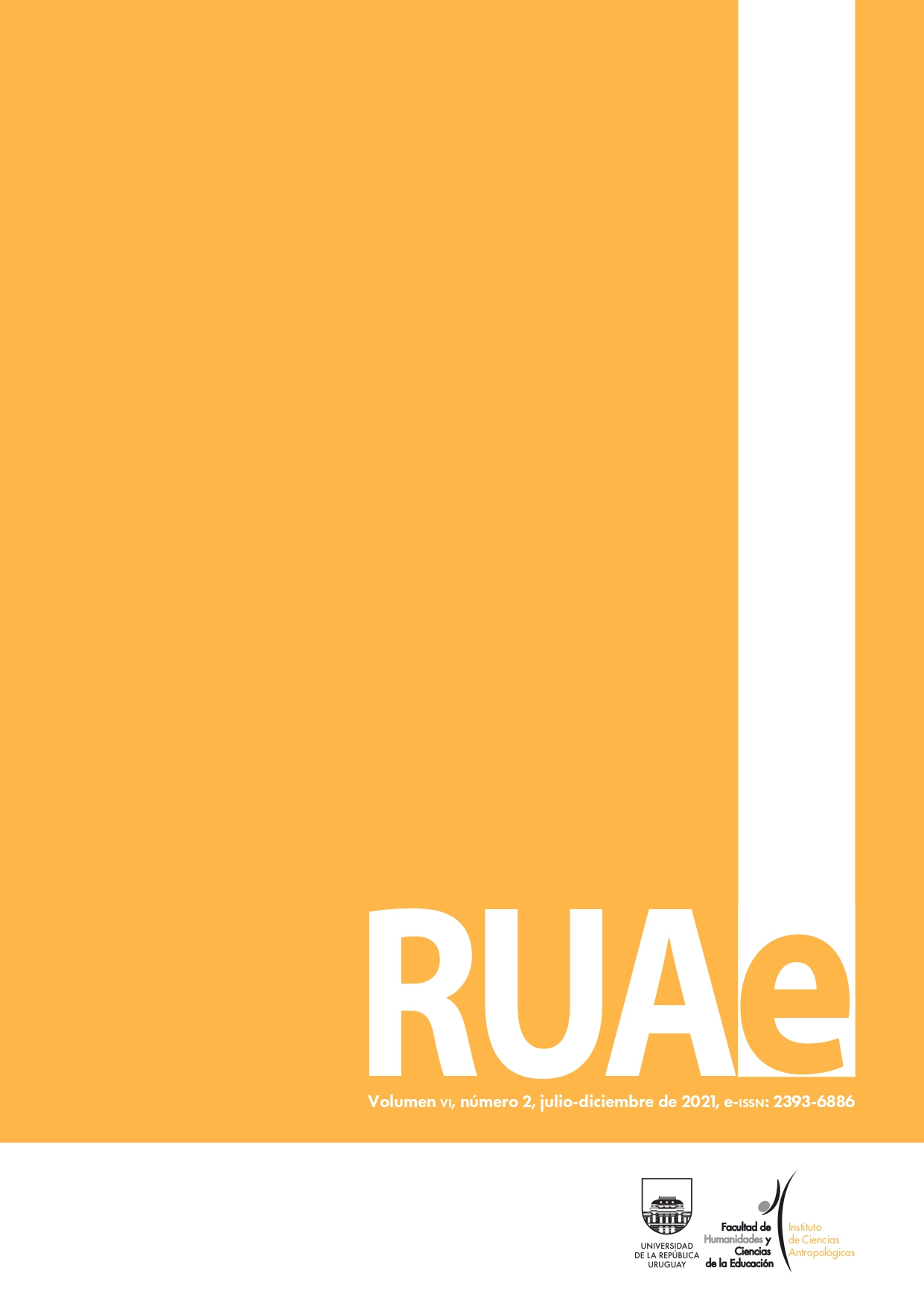We (still) need to talk about the baits : non human animals as workers in Pantanal´s tourism
Published 2021-12-20
Keywords
- estudíos animales,
- etnografia multiespecifica,
- trabajo animal,
- Pantanal,
- animales
- Animal Studies,
- multispecies ethnography,
- animal work,
- Pantanal,
- animals
- estudos animais,
- etnografia multiespécies,
- trabalho animal,
- Pantanal,
- animais
How to Cite
Copyright (c) 2021 Eveline Baptistella

This work is licensed under a Creative Commons Attribution-NonCommercial 4.0 International License.
Abstract
This article aims to reflect on the issue of non-human wild animals as workers in wildlife tourism based on multispecies ethnography carried out within the Pantanal Norte-MT. From a context the relations between species review in contemporary society, we discuss the premise of freedom of non-human animals in tourism and their effects on the depiction of a harmonious coexistence between human and non-human animals imaginary, advancing the debate about the practices in which animal work is legitimized and its implications among tourism actors. The data were based on an interdisciplinary theoretical framework that marks animal studies and the results indicates that tourism offers a safety net to non-human animals, wich is conditioned to the expression of submissive behaviors and the vulnerabilities that such work provides are generally relativized.
Downloads
References
- Adams, C. J. (2012). A política sexual da carne. São Paulo: Alaúde Editorial.
- Arini, J. (2009, abril). O alto preço de ver uma onça na natureza. Época, (570), 27.
- Arluke, A., e Sanders, C. (1996). Regarding animals. Philadelphia: Temple University Press.
- Baptistella, E. (2020). Animais não humanos e humanos no turismo do pantanal mato-grossense: da representação
- midiática ao encontro (Tese de doutorado). Universidade Federal de Mato Grosso, Programa de Pós-
- Graduação em Estudos de Cultura Contemporânea.
- Barbosa, L., Del Vecchio, V. e Schlickmann, G. (2021). Pantanal: resgate de jacarés e o fim deste blog. O Eco.
- Disponível em <https://www.oeco.org.br/noticias/luta-contra-a-fome-e-a-sede-realidades-duras-enfrentadas-
- pela-fauna-pantaneira/>.
- Bekoff, M. (2010). A vida emocional dos animais: alegria, tristeza e empatia nos animais. São Paulo: Cultrix.
- Burns, G. (2016). Animals as tourism objects: ethically refocusing relationships between tourists and wildlife. Em
- K. Markwell (Org.), Animals and tourism: understanding diverse relationships (edição eletrônica).
- Bristol: Channel View.
- Daly, N. (2019, junho). The wildlife we see, the suffering we don’t. Em National Geographic, 235(6): 44-77.
- Dias, R. (2008). Sociologia do turismo. São Paulo: Atlas.
- Fanaro, L. (2020). The domestic, the wild and its interstices: what a dog can do in Tierra del Fuego. Vibrant, 17(1), 1-22.
- Fennel, D. (2016). The status of animal ethics research in tourism. Em K. Markwell (Org.), Animals and tourism:
- understanding diverse relationships (edição eletrônica). Bristol: Channel View.
- Haraway, D. (2008). When species meet. Minneapolis: University of Minnesota Press.
- Joy, M. (2014). Porque amamos cachorros, comemos porcos e vestimos vacas: uma introdução ao carnismo. São
- Paulo: Cultrix.
- Kirksey, E., e Helmreich, S. (2010). The emergence of multispecies ethnography. Cultural Anthropology, 25(4),
- -576.
- Latour, B. (1994). Jamais formos modernos: ensaio de antropologia simétrica. São Paulo: Editora 34.
- Macedo, J., Barbi, R., Branquinho, F., e Bergallo, H. (2016). Controvérsias entre a Amazônia rural e a conservação:
- um estudo sobre a rede sociotécnica nas Reserva de Desenvolvimento Sustentável Mamirauá e
- Amanã no Amazonas. Anuário Antropológico, 41(1), 99-121. https://doi.org/10.4000/aa.1698
- Mello, M. (2012). Animals and Society: an introduction to human-animal studies. Nova Iorque: Columbia
- University Press.
- Mitsch, W., e Gosselink, S. (2007). Wetlands. Toronto: Wiley & Sons.
- Porcher, J. (2014). The work of animals: a challenge for Social Sciences. Humanimalia: A Journal of Human-
- Animal Interface Studies, 6(1), 1-9. Disponível em <https://hal.inrae.fr/hal-02630023/document>.
- Ratamaki, O., e Peltola, T. (2016). Drama over large carnivores: performing wild life tourism in a controversial
- space. Em K. Markwell (Org.), Animals and tourism: understanding diverse relationships (edição
- eletrônica). Bristol: Channel View.
- Shiva, V. (2002). Monoculturas da mente. São Paulo: Gaia.
- Singer, P. (2010). Libertação animal. São Paulo: Martins Fontes.
- Süssekind, F. (2018, abril). Sobre a vida multiespécies. Revista do Instituto de Estudos Brasileiros, (69),: 159-178.
- Disponível em <https://www.scielo.br/j/rieb/a/QGfsZZN9GhBwP437fYhqgGw/?lang=pt>.
- Thompson, J. (2011). A mídia e a modernidade: uma teoria social da mídia. Petrópolis: Vozes.
- Vander Velden, F. (2011). Antas dos brancos, veados grandes, onças de criação. Comciência, (134), 1-5. Disponível
- em <http://comciencia.scielo.br/scielo.php?script=sci_arttext&pid=S1519-76542011001000009&lng=
- es&nrm=iso&tlng=es>.





